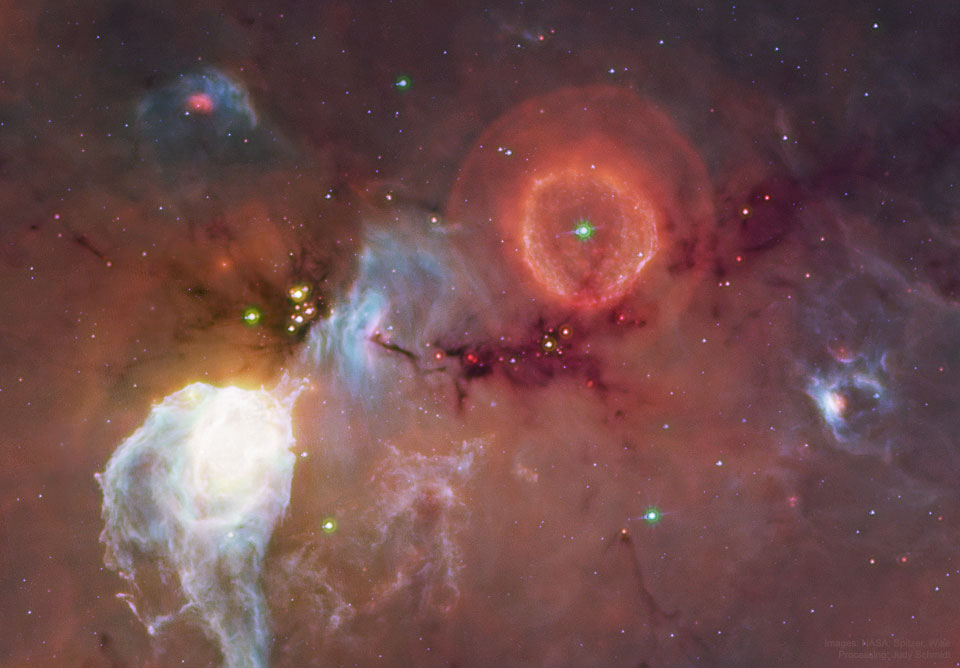
Stars this volatile are quite rare. Captured in the midst of dust clouds and visible to the right and above center is massive G79.29+0.46, one of less than 100 luminous blue variable stars (LBVs) currently known in our Galaxy. LBVs expel shells of gas and may lose even the mass of Jupiter over 100 years. The star, itself bright and blue, is shrouded in dust and so not seen in visible light. The dying star appears green and surrounded by red shells, though, in this mapped-color infrared picture combining images from NASA's Spitzer Space Observatory and NASA's Wide-Field Infrared Survey Explorer. G79.29+0.46 is located in the star-forming Cygnus X region of our Galaxy. Why G79.29+0.46 is so volatile, how long it will remain in the LBV phase, and when it will explode in a supernova is not known. via NASA http://ift.tt/2fIuXau